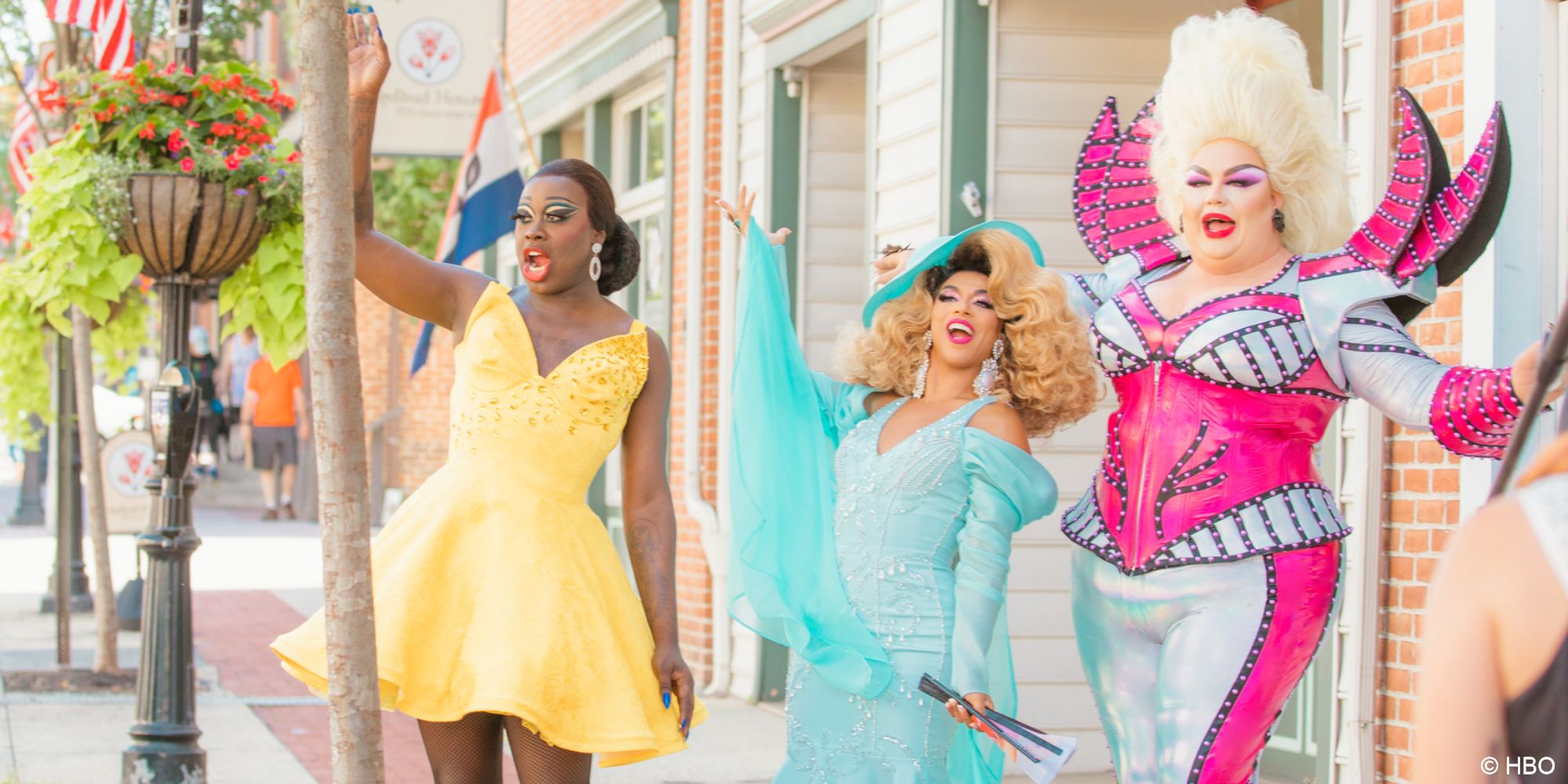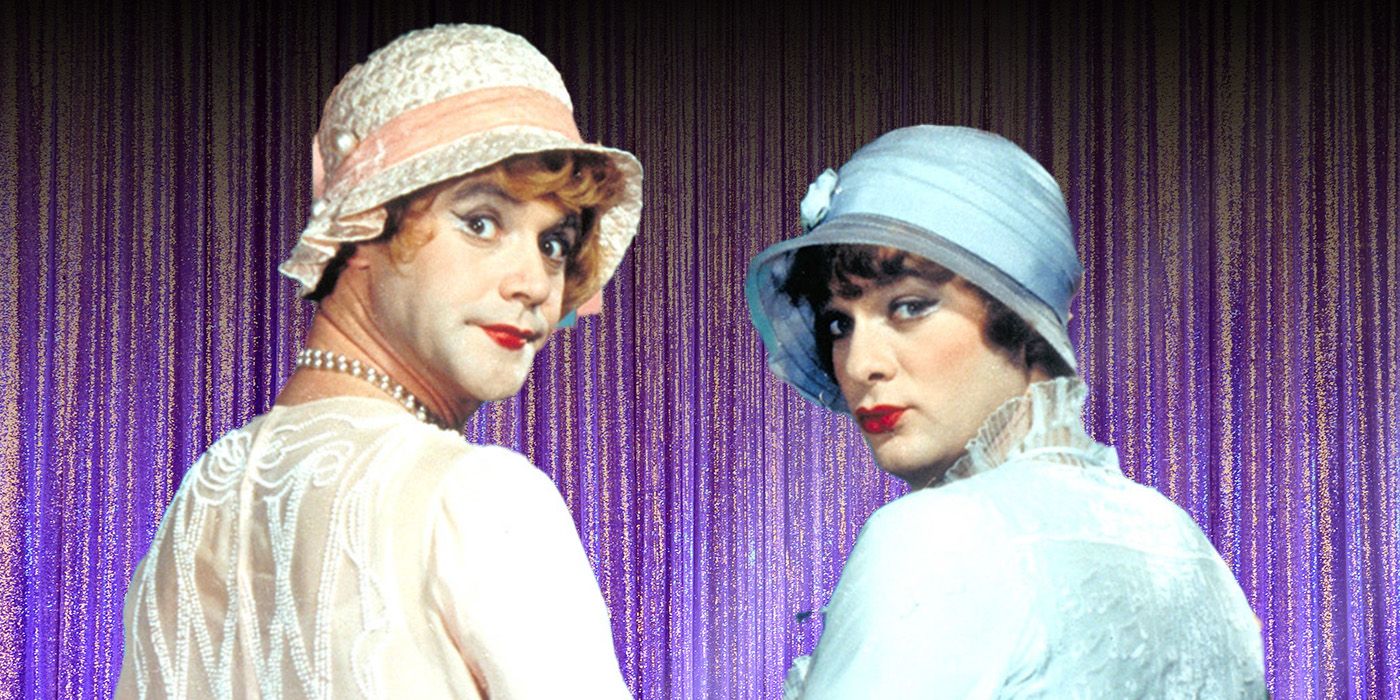The Big Picture
- Tony Curtis and Jack Lemmon’s convincing performances as women were key to the success of Some Like It Hot.
- Vander Clyde Broadway, known as Barbette, played an important role in teaching Curtis and Lemmon how to pass as women.
- Some Like It Hot received critical acclaim and multiple Oscar nominations, solidifying its status as a classic comedy film.
Billy Wilder‘s 1959 comedy Some Like It Hot was a risky proposition for its time. From the scandalous premise, which required stars Tony Curtis and Jack Lemmon to spend most of the movie in drag and in need of approval under the Hays Code, to the problems on set with the famously difficult Marilyn Monroe, the film was by no means a guaranteed success. What if Curtis and Lemmon’s performances were awkward, unconvincing, and cringey? What if the audience didn’t respond to them? But, as it would turn out, their performances were surprisingly convincing, and audiences ate them up, thanks in part to the brilliant drag performer who was brought in by Wilder to teach the pair to pass as women: Vander Clyde Broadway, also known as Barbette.
Some Like It Hot
After two male musicians witness a mob hit, they flee the state in an all-female band disguised as women, but further complications set in.
- Release Date
- March 19, 1959
- Director
- Billy Wilder
- Runtime
- 121 minutes
- Main Genre
- Comedy
- Writers
- Billy Wilder , I.A.L. Diamond , Robert Thoeren
What Is Billy Wilder’s ‘Some Like It Hot’ About?
Curtis and Lemmon star as Joe and Jerry, a pair of jazz musicians who have the misfortune of witnessing a group of mob murders. To hide their identities and get out of town fast, they pose as women (“Josephine” and “Daphne”) and join an all-female band on its way to Florida for a three-week gig. Marilyn Monroe plays Sugar Kane, the band’s beautiful, rebellious singer and ukulele player who hopes to snag a millionaire husband. In the hopes of winning her over, Joe takes on yet another false identity (that of an heir to the Shell Oil fortune) when he’s not pretending to be Josephine.
Meanwhile, Jerry/Daphne strikes up an unlikely romance with an actual millionaire, Osgood Fielding III (Joe E. Brown), who is smitten from the moment he lays eyes on the statuesque bass player. Daphne is eager to settle down with Osgood in financial luxury, despite Joe’s protests: “There are laws, conventions! It’s just not being done!” Whether the film would land with audiences hinged on the production’s ability to sell the idea that Joe and Jerry could pass as women. If their masculinity was obvious despite the makeup, wigs, shaving, plucking, dresses, and padding (basically, if they looked cartoonish rather than convincing), the story would fall apart.
Barbette Captured Audiences Worldwide
Vander Clyde Broadway was born to a working-class family in Round Rock, Texas in 1899. As Francis Steegmuller wrote in his 1969 New Yorker profile, Broadway grew up picking cotton in the summers to save money so he could visit the circus in nearby Austin as often as possible. After graduating high school at age 14, he took a job in San Antonio as one half of an aerialist act called the Alfaretta Sisters. One of the sisters had died, and the surviving sister wanted to keep the act all female, arguing that it sold better. “I did not in the least mind being dressed as a girl,” Broadway explained. “Certain parts of my nature were known to me before I became ‘Barbette.’” From there, he would join Erford’s Whirling Sensation before developing his own trapeze and high wire act.
Inspired by male actors who took on female roles on stage in Shakespeare‘s time, Steegmuller writes, Broadway took the stage name Barbette and performed in full drag… apparently very convincingly. The act began with a seductive striptease in which Barbette would take off his lavish ostrich feather hat and evening gown on stage to reveal the skimpiest of costumes, and end with the star removing his wig and striking exaggeratedly masculine poses, revealing his true identity to a stunned crowd. (A note: it’s customary to use “she/her” for drag queens when they’re performing, but it’s clear that “Barbette” was more than just a performance. He went by the name Barbette for the rest of his life, even after he stopped performing and lived full-time as a man. Thus, we’ll use “he/him” for Barbette throughout.)

5 Movies Featuring Famous Drag Queens
These queens are anything but “drags.”
The act was an instant hit, and Barbette was soon performing on Vaudeville and in New York City and booking engagements all over Europe. He became the talk of Paris, where he rubbed elbows with French royalty and was reportedly paid as much as $2,000 per performance, which is around $36,000 in today’s money. He may have had an affair with Jean Cocteau; at the very least, the filmmaker was smitten with Barbette, writing a glowing essay, Le Numéro Barbette, that praised his artistry. He also cast Barbette in his 1930 experimental film, The Blood of a Poet.
In 1935, Barbette returned to the U.S. to appear in the massive Broadway circus show, Jumbo, but just a few years later in 1938, he was hospitalized with pneumonia and another illness (possibly polio) that left him nearly paralyzed. After 18 months in the hospital and extensive rehab, Barbette was able to return to work. This time, however, it would be as a trainer and artistic director, not a performer. In her Texas Monthly profile, Lauren Castro writes that Barbette was rejuvenated by his return to the circus. “Now my star is again in its ascendancy, and I am pleased,” he said. He designed new aerial acts for Ringling Bros. that were so innovative that reviewers described him as having “reinvented the aerial ballet.” He choreographed circus sequences for Orson Welles’ Broadway musical Around the World and even consulted with Disney for its 1969 spectacular, Disney on Parade.
Barbette Heavily Influenced Jack Lemmon and Tony Curtis’ Performances
Soon Barbette was in demand as a consultant in Hollywood, and it was during this time that Wilder, who had seen Barbette perform in Europe years earlier, brought him in to coach Lemmon and Curtis to pass as women. As Curtis wrote in his memoir, The Making of Some Like It Hot: My Memories of Marilyn Monroe and the Classic American Movie, some of the advice was surprising: “In the Navy they taught us to keep our butts tight, but I never did hear of sitting with the palms of your hands down so that you don’t flex your biceps.”
Lemmon, however, was less receptive to Barbette’s guidance. When the performer advised the men to cross one foot in front of the other when they walked in order to emphasize the movement of their hips, according to Curtis, Lemmon was having none of it. “Nobody does that. Man or woman,” he said. With no reason to stick around and put up with Lemmon’s combativeness, Barbette walked off the set.
Though their collaboration was not amicable, the time Curtis and Lemmon spent with Barbette paid off. Curtis writes of testing their feminine looks for the first time by using the women’s restroom on the studio lot. Despite feeling extremely self-conscious, he remembered Barbette’s body language tutorials and followed them. None of the women in the restroom batted an eye at the pair.
‘Some Like It Hot’ Was Nominated for Many Oscars
Some Like It Hot would go on to become a smash hit, reportedly grossing $14 million in its first run. Although it didn’t land with every audience — older audiences, in particular, were often unreceptive — reviews were widely positive, with critics calling it “probably the funniest picture of recent memory,” a “supersonic, breakneck, belly-laugh comedy” and “one of the wildest, wooliest and most infectiously fun comedies of the year.” Despite his conflict with Barbette, Jack Lemmon would earn an Academy Award nomination for his performance. The film would also get nominations for Best Screenplay, Best Art Direction, and Best Cinematography, and would win for Best Costume Design.
By the early 1970s, Barbette was in near constant pain as the result of a lifetime of job-related injuries and his battle with illness three decades earlier. He returned to Texas to spend his remaining time with his sister, and in 1973 he took his own life via overdose. The stone that marks the resting place of his ashes in the Round Rock Cemetery lists his name simply as Barbette.
It’s impossible to overstate the importance of drag in American film, from Tootsie and The Birdcage to Hairspray and Victor/Victoria (the protagonist of which may have been based on Barbette), and even Mrs. Doubtfire and The Little Mermaid. Yet too often, the real drag icons who inspire these stories are overlooked or ignored. Barbette himself is credited in only one of the films on which he consulted (1959’s The Big Circus) meaning he is nearly always left out of the conversation. As Hollywood and the wider world learn not only to accept but to celebrate both drag culture and LGBTQ+ identities, it’s essential that we remember the performers who are no longer here but helped us to get to where we are today.
Some Like It Hot is available to stream on Max in the U.S.
WATCH ON MAX




